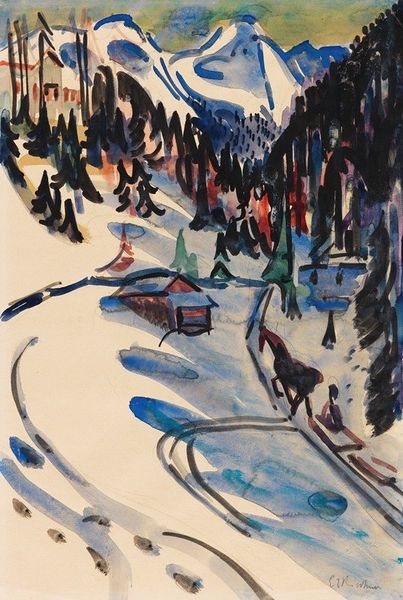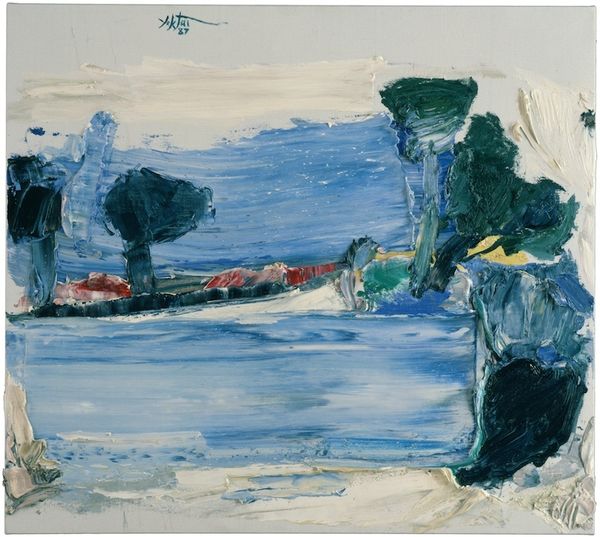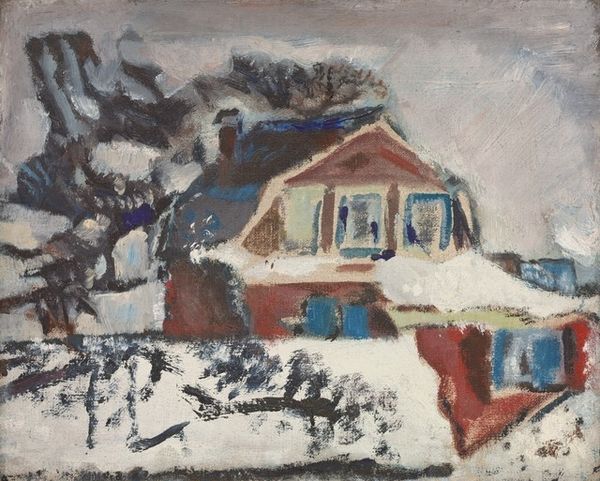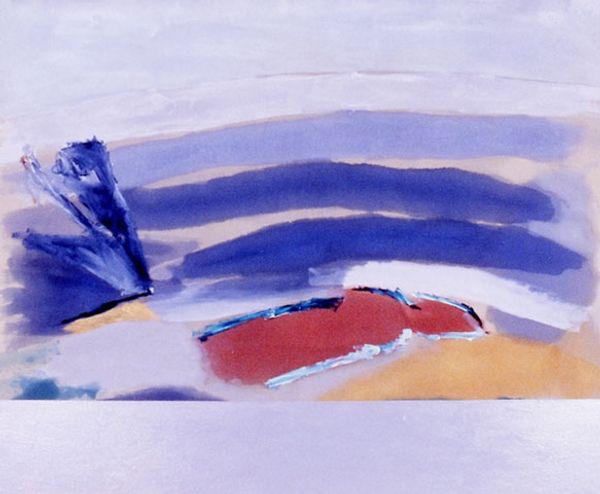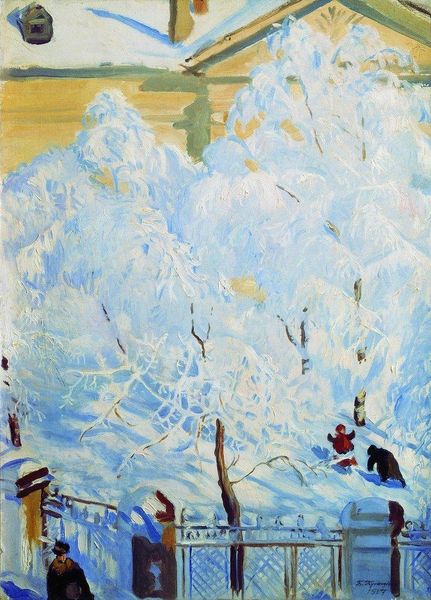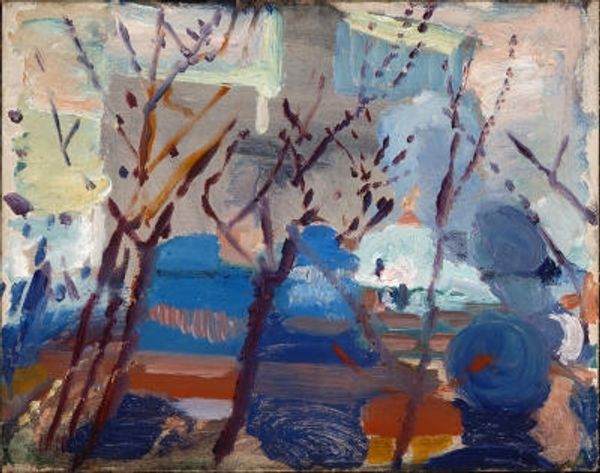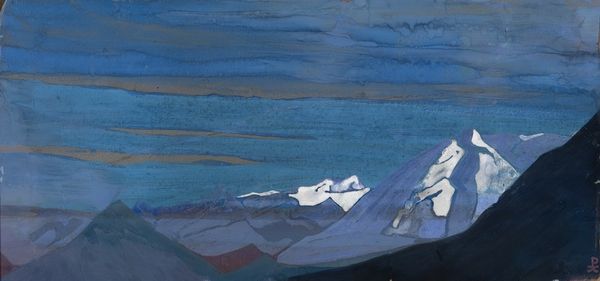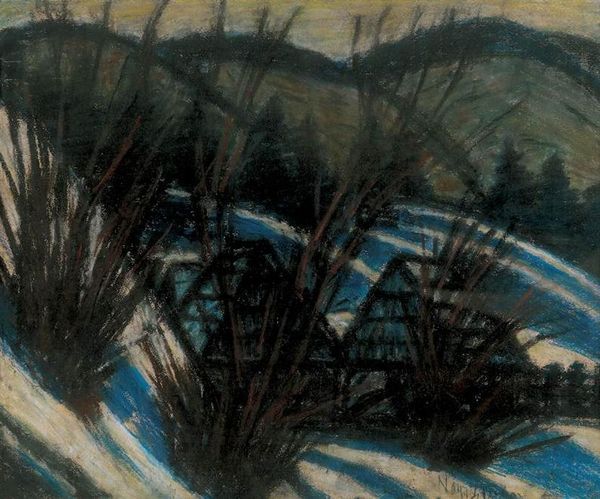
oil-paint, impasto
#
oil-paint
#
landscape
#
german-expressionism
#
oil painting
#
impasto
#
forest
#
expressionism
#
cityscape
#
monochrome
Dimensions: 110 x 130 cm
Copyright: Public domain
Editor: Here we have Edvard Munch’s “Red House and Spruces,” painted in 1927 using oil. The overwhelming blue is what grabs me—it feels cold and isolating. What do you see in this piece beyond just the surface? Curator: That striking blue evokes a deep sense of melancholy, but it also serves as a potent symbolic field. Blue, historically, has been linked with spirituality, the infinite, and even states of emotional intensity. Notice how Munch contrasts the cool blue with the vibrant red of the house; what might that juxtaposition suggest to you? Editor: Perhaps the red house represents warmth and refuge against the cold and loneliness symbolized by the blue? A safe haven maybe? Curator: Exactly. The red house, then, isn’t just a structure; it’s a symbol of hope, of human connection amidst a potentially overwhelming natural world. And the spruces—their shapes are almost like figures, aren’t they? They loom, guarding, almost possessive, but the small size of the house compared to the towering trees...how does that impact you? Editor: It creates a feeling of vulnerability. The house is small, almost overwhelmed by nature. Maybe it's a statement about our place in the universe. Curator: Precisely. The painting becomes an exploration of the human condition. Munch is inviting us to consider our place in a vast, and at times, indifferent world, grappling with themes of isolation, hope, and the search for meaning. It's about more than just scenery. Editor: That gives me a new way of seeing Munch, more layered than I thought. Curator: Indeed, exploring the symbolic weight transforms a landscape into a mirror reflecting our inner world.
Comments
No comments
Be the first to comment and join the conversation on the ultimate creative platform.
